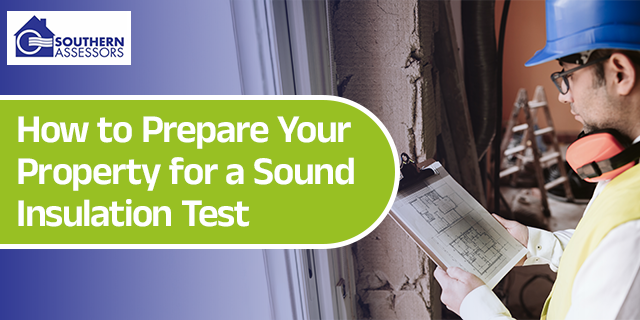If you are building or converting a property, sound insulation testing is one step you cannot ignore. It is required by Building Regulations. It checks how well sound is blocked between rooms or dwellings. It applies to houses, flats, and even rooms for residential use.
The test looks at both airborne and impact sound. Airborne includes talking, TV, or music. Impact includes footsteps or objects dropping on the floor. Getting it right is essential for compliance, resale value, and comfort. So, how do you get your site ready for a successful test? Let’s break it down.
Finish All Key Work Before the Test
The property must be fully built. That includes all walls, floors, ceilings, doors, and windows. No gaps. No missing skirting. No half-installed flooring. Temporary materials are not allowed. The test will not be valid if there is plastic sheeting where glass should be. Or if doors are missing handles. Make sure the building is dry and secure. No workers should be making noise during the test. You will get better results when the site is clean, quiet, and complete.
Seal All Gaps
Sound travels through even the smallest openings. That includes holes for wires, gaps in plasterboard, or cracks around sockets. Check door frames. Fill spaces under skirting boards. Seal pipework where it enters or leaves a room. Use acoustic sealant where needed. Do not rely on expanding foam alone. A small draft can fail a test. So walk around the test rooms carefully. Check corners and joints. Fix what you see.
Fit Floors and Carpets Correctly
If the floor covering is part of the acoustic design, it must be fitted before the test. Some systems use an overlay. Others rely on timber or laminate. Do not leave this step for later. For impact testing, hard flooring must be in place. Carpet can sometimes mask poor design. So, follow the plan approved during the build. Ask your acoustic consultant if you are unsure. They will tell you what the floor should look like before testing.
Keep the Site Quiet During Testing
On the day of the test, turn off machinery, tools, and loud music. Limit the number of people on site. Do not schedule other work in the test zone. Sound testing needs a quiet environment. Background noise affects the readings. Even talking can make a difference.
Professionals offering sound insulation testing in Hampshire, sound insulation testing in Wiltshire, or other nearby areas will remind you of this. Follow their advice. It helps you pass on the first try.
What Happens During the Test
You may ask, How do you measure sound insulation? The process is simple. For airborne sound, a loudspeaker plays white or pink noise in one room. A microphone measures how much of that sound passes into the next room.
For an impact sound, a tapping machine is placed on the floor. The receiving room below records how much sound comes through. The results are compared to Building Regulation limits. If your property meets the standard, you pass. If not, the report will explain what needs fixing.
Where to Find Help Near You
If you are working on a site in southern England, there are plenty of trusted services available. You can book sound insulation testing in Berkshire, sound testing in Oxfordshire, or even sound insulation testing in Oxfordshire for repeat checks or larger projects. Make sure you hire experienced testers. They bring the right equipment. They explain what they are doing. And they help you understand the results.
Final Check Before Testing
Walk through each room. Close every window. Test every door. Make sure everything is clean, sealed, and quiet. Good preparation saves time and money. It avoids retesting. And it gets you one step closer to sign-off. Sound testing may seem technical. But with the right plan, it is easy to pass. Take the time to prepare your property properly. And let the experts do the rest.


